Michael Walters
Notes from the peninsula
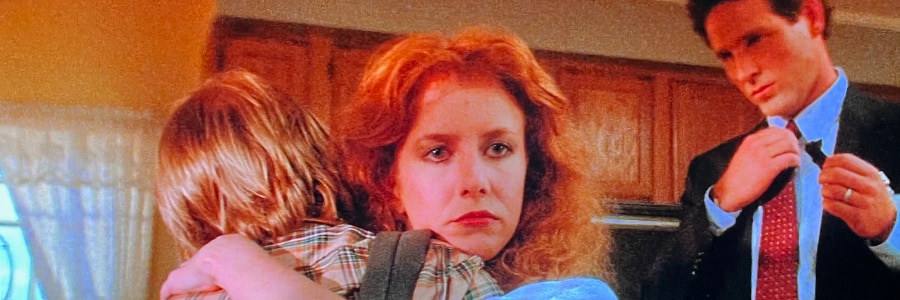
Director: Tobe Hooper
Continuing my Tobe Hooper deep dive, Invaders from Mars takes us to small town America, a loving family, and a boy, David Carlsen, watching lights land in the field behind his home. Neither of his parents believe him, but the next morning his father has a cut on the back of his neck and is behaving strangely. Soon people all over town are doing the same and David is on the run.
Hooper is playing with a pastiche of black and white science-fiction films, but subverting it by having the aliens turn people into conformist fifties stereotypes instead of communists as in Invasion of the Body Snatchers. I wish it were shorter, less of a children’s film, and with a sharper ending — there’s too much shouting and running around. Karen Black as school nurse Linda has fun hamming it up when the impressively gross and made-with-practical-effects aliens appear. Fun fact: David was played by her real son, Hunter Carson.
I didn’t know Hooper did this pivot from horror into sci-fi. He signed a three-movie deal with Cannon after Poltergeist, of which Lifeforce and Invaders from Mars were the first two. I’m not sure I’ve got the will for The Texas Chain Saw Massacre Part 2.
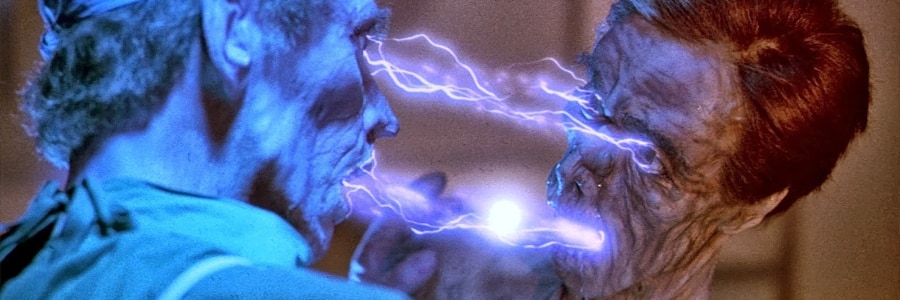
Lifeforce (1985)
Director: Tobe Hooper
Tobe Hooper had a long career and is still talked about reverently on the film podcasts I listen to, but I’d only seen his greatest hits — The Texas Chain Saw Massacre, Poltergeist, and The Funhouse. But where to start with his other films… naked space vampires hidden in Halley‘s Comet, you say? I’m in!
Colonel Tom Carlsen is the only survivor of a science expedition into the tail of Halley’s Comet that discovered an alien spaceship inside it holding three humanoid aliens encased in glass. The aliens seem unharmed and are taken to a UK army facility. The female breaks free and escapes into the countryside, so the British government bring in Colonel Colin Caine to work with Carlsen, who seems to have a psychic connection with the alien woman, to track her down. The alien spacecraft leaves the comet and approaches Earth, and the aliens plan for humankind soon becomes clear.
Like The Quatermass Experiment, astronauts bring alien life home with them, but Lifeforce looks like it had a big budget, with lots of guns, explosions, London in flames, hundreds of zombie-like extras running around, army units, helicopters, the whole shebang. It looks amazing. The Space Girl (!) walks around naked for the first half of the film, coolly dispatching all who attempt to stop her by sucking psychic energy from her victims.
Carlsen is both her strength and her vulnerability. There’s a whole explanation of how she’s shape-shifted to appear as his idealised woman, and his unhinged behaviour in her presence is an amusing manifestation of how it feels to be in love in that crazy way where the other person isn’t seen as real — in this case, a seven-foot tall bat creature.

Infinity Pool (2023)
Director: Brandon Cronenberg
James and Em travel to a luxurious resort in an obscure foreign country to help James find ideas for his next novel. It’s been six years since his debut, so when flirtatious fan Gabi invites them to dinner with her husband, James accepts, and the foursome soon find themselves outside the resort driving to a deserted beach in a rented car. On the way back, James drives into a local farmer, killing them, and the local police explain that the penalty for doing that is death… but if they can afford it, the police can make a clone of James, and the clone can be killed instead.
It’s wonderful that the films of father and son are in conversation with each other. Crimes of the Future is about a man’s desire to use his natural generative energy (aka organs) for art. Infinity Pool is about the price a man will pay to escape the despair of writer’s block. Gabi switches from seductive to direct to monstrous in the blink of an eye, which is at times very funny, and like us James is transfixed.
At the start, Em half-jokes that she is with the creatively impotent James because of daddy issues, but James has far more destructive mother issues, swapping the financially supportive but emasculating Em for the manipulative Gabi who demands James prove his strength though ever more dangerous acts. His self-destructive nature meets its match in someone who wants to test him to destruction.
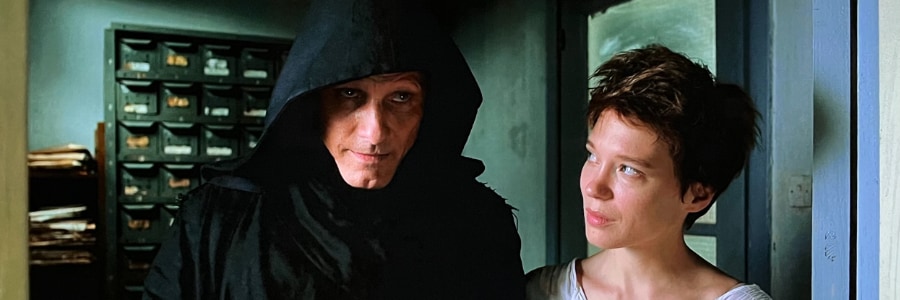
Director: David Cronenberg
I’m more drawn to the philosophical body horror with which David Cronenberg started his career: Shivers, Rabid, The Brood, Scanners, Videodrome. That’s as distinctive and interesting run of films as anyone’s ever made. The extremes of the psyche and technology are again to the fore in Crimes of the Future, which is a clear call at the end of his career back to the beginning.
Saul has “accelerated evolution syndrome”, which means his body is constantly creating new organs without an obvious purpose, and while he is often uncomfortable, he cannot feel pain. His artistic partner Caprice performs surgery to remove the organs in front of live audiences as performance art. This attracts the attention of two overly-into-it civil servants at a new National Organ Registry, as well as the government police, a pair of tech mechanics, and the father of a murdered child.
It’s a chaotic film, full of graphic mutilation, big ideas and knowing performances that lead to some laugh-out-loud moments. The ridiculousness of humans’ desire to replace the wonders of the natural body with technological equivalents is clear, and as one character says, surgery is the new sex. It feels like this film is a raised eyebrow from Cronenberg at his whole career. Perhaps he’s making sure we got the joke.
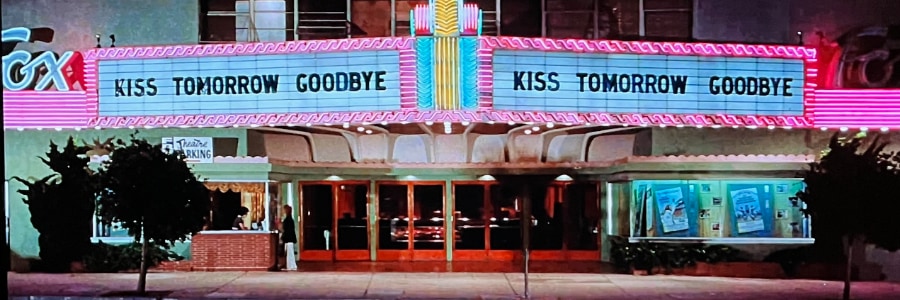
Messiah of Evil (1973)
Director: Willard Huyck, Gloria Katz
Sticking with the year of my birth, Messiah of Evil is a masterpiece in a different vein to Don’t Look Now. The mood is just as intense, but achieved through a series of impressive set pieces, a creepy seaside location, unsettling set designs, and a constant drip of respectable-looking citizens doing weird and unsettling things.
Arletty is looking for her artist father who’s gone missing from his home in the seaside town of Point Dune. She runs into Thom, who is interested in the legend of Point Dune’s blood moon, but is familiar with her father’s work and didn’t know that’s where he lived. He and his girlfriends, Toni and Laura, appear at Arletty’s father’s empty beach house because the townsfolk won’t rent the unconventional group a room. Going through her father’s increasingly morbid diaries, they try to understand the mystery of his disappearance as the danger from the oddly-behaving townsfolk grows.
A pickup truck has bodies in the back with eyes gouged out. An artist’s studio is painted with staring faces. Groups of suited people gather over bins in alleyways. People bleed from the eyes for no reason. The slightly sleazy Thom begins to care for Arletty, who might be succumbing to the town’s evil, and honestly, I can’t get enough of this vibe.
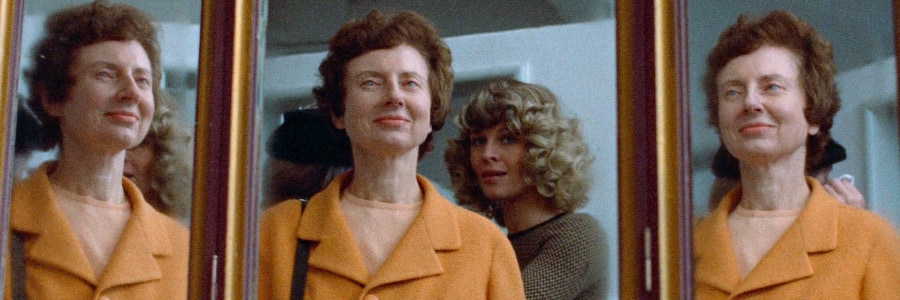
Don’t Look Now (1973)
Director: Nicolas Roeg
A friend suggested we see Don’t Look Now on the big screen, and that’s how I found out it was fifty years old — like me. A potent year. It hasn’t been that long since I last saw it, October 2019 in fact, but it still felt fresh, and there are so many small touches of artistry it was like seeing it for the first time.
Laura and John’s daughter Christine drowns in the garden pond, and as a reaction they move to Venice where John works on restoring an old church. His avoidance of grief damages their marriage, so when two sisters approach Laura, one of them a psychic, telling her Christine is happy in the afterlife, John hates the idea, and as Laura finds comfort in the sisters’ presence, John becomes more and more obsessed with his work and the brutal murders simultaneously taking place in the city.
It’s a masterpiece — a ghost story, sort of, a psychological thriller and family drama, certainly, but I think the reason it’s still talked about is the magical way Laura and John’s marriage is portrayed as they excavate the grief that’s pushing them apart. Everything works as a whole - the score, the imagery, the editing, the script, the acting — it’s a perfect film.
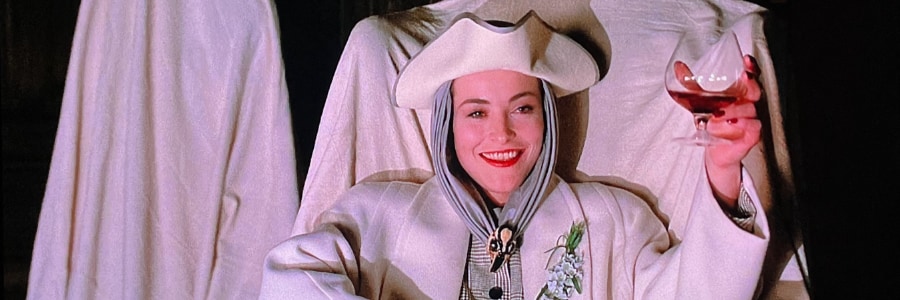
Director: Ken Russell
This was the first time I’d seen this film since being a teen. Eve Trent and her sister, Mary, are running a B&B in the Peak District after the mysterious disappearance of their parents the year before. Archaeologist guest Angus uncovers a monstrous skull in their garden, to the great interest of their suddenly returned neighbour Lady Sylvia Marsh. Landowner Lord James D’Ampton is a descendent of the knight who killed the mythical White Worm in the nearby caves, so when the skull is stolen from the Trent’s house, he takes an interest.
What a difference thirty years makes. It’s camp horror fun with a nasty edge. I taped this off the TV back in the day and watched certain bits over and over on a fuzzy screen trying to work out exactly what was going on. Naked nuns and Amanda Donohoe were going on, of course, but that’s what being in the sticks in the eighties was like. Stimulation was scarce. But as a film, it was dull — not scary, the plot made no sense, and it felt like a comedy failing to be funny. I WAS SO WRONG.
Perhaps I’m being dazzled by the creative will that brought the low budget films I’m watching this year into existence, but I found this to be joyful, anarchic, erotic, disgusting, surreal — qualities I don’t find in many modern films. Ken Russell was a genius.
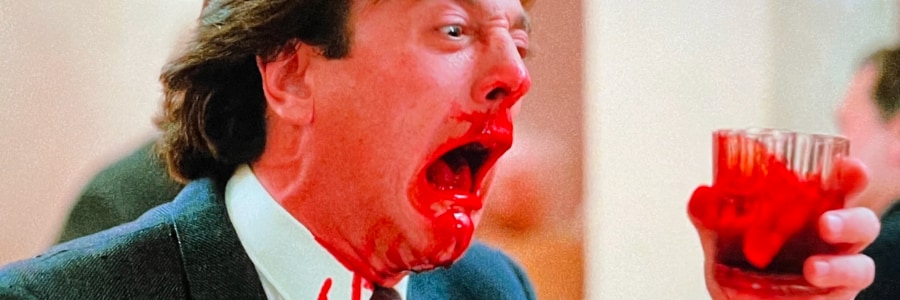
Slugs (1988)
Director: Juan Piquer Simón
A slimy romp where a small town has been infested with slugs coming up through the sewers into people’s homes. Public health officer Mike Brady gets suspicious when a local drunk is found half-eaten in his dilapidated house on the edge of town. When more people start to die in horrific ways, the (seriously grumpy) local sheriff doesn’t listen to any of Brady’s concerns… yes, it’s a bit like Jaws.
The slugs aren’t particularly scary, but the ideas are, and there are some fine set pieces, the standout being a man in a restaurant who ingests part of a slug in his lettuce and basically explodes at his table. Of course, it’s silly — it’s called Slugs! — but as lots of these cheap 70s and 80s horrors were, it’s creative, fun and weirdly sexy.

Death Ship (1980)
Director: Alvin Rakoff
The more cheap horror films I watch from the late seventies and early eighties, the more I admire them. When Death Ship popped up on Prime, I remembered a scene that was seared into my childhood brain, one of those kindertrauma moments, along with the Wheelers in Return to Oz, the man driven mad by a thousand paper cuts from his vengeful wife a in Tales of the Unexpected episode, and others that I can’t connect with titles, like a swimmer in a pool with a glass cover sealing her in.
Captain Ashland is on his final voyage and is begrudgingly handing the reins to a younger man, Marshall. At the end-of-cruise party, another ship deliberately rams them, and there are only a handful of survivors, including Ashland and the Marshall family. The next day the ship floats by but with no crew. When they board it, Ashland hears echoes of German voices, and the others begin to sense perhaps they are not really alone.
It keeps a steady pace as a ghost story, making the most of the spectacular empty ship as a location. The final act really dials up the horror. The cast is made up of top notch actors — George Kennedy as Ashland, Richard Crenna as Marshall (later Rambo’s boss in First Blood), Sally Ann Howes as his wife, Margaret (Truly Scrumptious from Chitty Chitty Bang Bang, ANOTHER KINDERTRAUMA), and the relatively unknown Victoria Burgoyne…
… who, just after the halfway point, as my intuition had suggested, gets trapped in a shower while blood rains down on her naked body, and screams and writhes for a solid two minutes while her panicking boyfriend tries to get in. Great stuff! I’m glad I found it because that scene really got under my skin as a kid. I can lay it to rest. Am I ready for Chitty Chitty Bang Bang though?
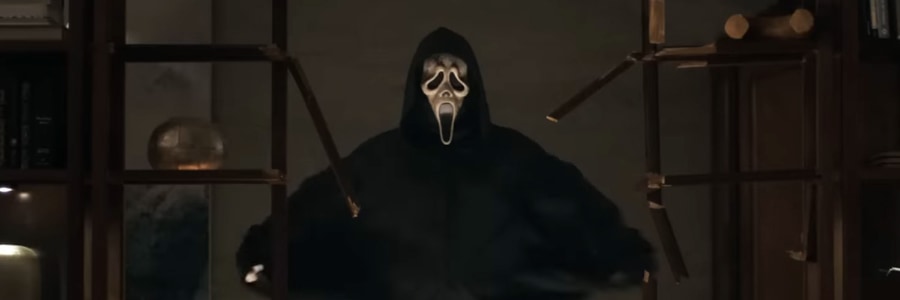
Scream VI (2023)
Director: Matt Bettinelli-Olpin, Tyler Gillett
The surviving friends from Scream 5 go to college as a pack, and in New York the franchise finds some fresh energy. The opening is excellent. Samara Weaving shines as a nervous film professor in an upmarket bar waiting for her Tinder date who’s lost and talks her through his attempts to find her. It’s Halloween, so the streets are full of students in costumes on their way to parties. After the lethargy of the previous film’s opening, this one was immediately full of surprises.
The Carpenter sisters, Sam and Tara, clash over what the younger Tara can do, and at university of course there are new people in the mix, with likely and unlikely suspects, and unexpected adults from Woodsboro in positions of authority… in Manhattan?! Like with all these films, it’s about the plots, and it’s nothing to do with the plots, because we’re always looking out for Ghostface. Another game kicks in and everyone is a suspect.
There are some top-notch scenes, my favourite being on the subway with everyone in Ghostface masks, but also the finale where there is some John Wick speed stabbing going on. Sam gets to own her genetic inheritance. Don’t think about it too much, and it’s fun.

Scream (2022)
Director: Matt Bettinelli-Olpin, Tyler Gillett
I think I’m getting too old for these films. The teenagers pointed banter has become straight up annoying. The legacy characters arrive with the camera knowingly hovering for the audience to whoop and cheer… but having said that, David Arquette’s Dewey is by far the best thing about it.
Ah, the plot. It’s a whodunnit, but with lots of stabbing. We know this. Twenty-five years after the first Ghostface, another killer is on the loose, this time attacking people related to the original killers and victims. Sam returns to Woodsboro from California when her younger sister Tara, who we see toyed with via phone in classic style, ends up badly wounded in hospital. Sam goes to Dewey for help, and he tells her the rules — someone in the close friend group is always the killer.
The final showdown happens in the same location as in the first film, which is a clever touch. Actually, I think that’s what the problem was for me – it’s not much different to previous films, it relies too much on the older characters coming back, and the new ones lack charisma. Christ, now I really do sound old. You bloody curmudgeon!
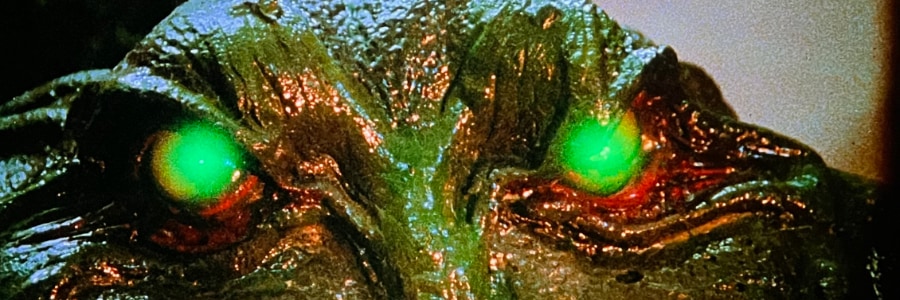
Director: Rolfe Kanefsky
A group of teenagers drive to a parents‘ vacant summer house in woods near a lake. One of them, the uptight film nerd Mike, calls out every possible warning sign that they’re in danger, annoying his friends (and the viewer). He’s obnoxious. And of course he ends up being right.
This popped up on Mubi billed as a low-budget meta horror film made four years before Scream. It’s a mix of Cabin in the Woods, Friday the 13th, Evil Dead and Scream, but with no budget. To make up for it, the location is cool, the director makes some clever shot choices, and quickfire editing when the action ramps up hides a lot. At one point we see the mike boom hanging down, and for a moment your heart sinks, but then one of the actors swings on it to escape the attacking creature. You have to admire the chutzpah.
Another van of teenagers shows up at the halfway point displaying all the hallmarks of slasher victims, but they’re at the wrong lake, so they cheerfully drive on. It’s fun, a broad horror comedy that isn’t afraid of the horror, with everyone seemingly enjoying themselves. And none of the actors went on to make anything of note. I hope they get a little recognition now.
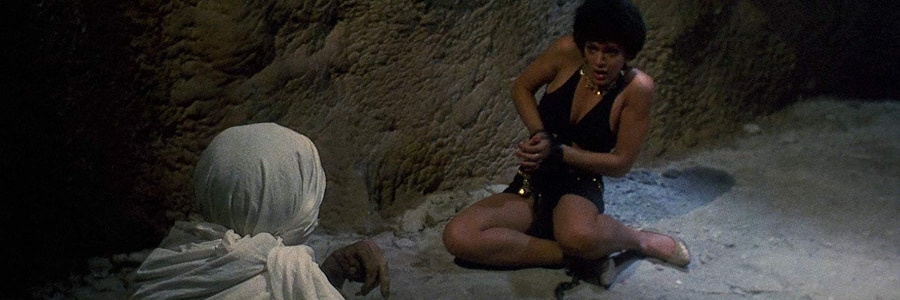
Castle Freak (1995)
Director: Stuart Gordon
The Reilly family arrive in Italy to inherit a castle left to them by an elderly Duchess. They don’t know that she kept a creature chained up in the dungeons, beaten and fed on scraps until her death. John, Susan and their daughter Rebecca plan to only stay as long as it takes to make an inventory of the place, but the desperate creature escapes causing cannibalistic mayhem.
John and Susan are barely holding on in their marriage — he killed their son in a drunken car crash that also blinded their daughter. Even though it must be intentional, the heightened acting style and melodramatic tone is annoying. The creature is like Frankenstein’s monster, but created through abuse rather than science, and the most effective parts of the film are when he is shambling through the castle after his prey.
The copy on Shudder is terrible quality, so this felt like watching a VHS tape back in the day, and for one particularly tough cannibalism scene I was actually glad of the fuzzy picture. Let’s call it a fundamental mix-up between intimacy and appetite.
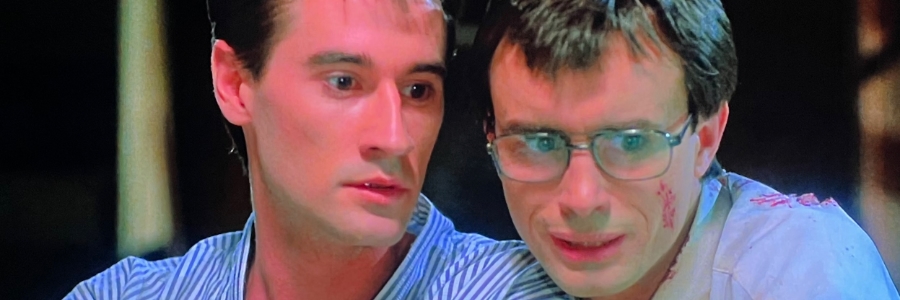
Re-Animator (1985)
Director: Stuart Gordon
When I was a teenager, this film had the reputation of being so fucked up that it’s taken me thirty years to press play. I started #31DaysofHorror in 2018, and each year I’ve looked at the cover art and thought, nah, maybe next time. It’s smaller, more amusing, and cheaper looking than I expected, a celebration of creativity under constraints. There are only a handful of interior locations and a series of increasingly impressive gore effects.
It’s a version of Frankenstein, a subject clearly dear to Stuart Gordon’s heart since there are similar mad scientists and abused creatures in other films he’s made. Barbara Crampton as Megan commits wholeheartedly to Gordon’s camp vision and makes some courageous decisions (if you‘ve seen the ending you know what I mean). Jeffrey Combs is comically psychopathic as Herbert West, the lodger-scientist with an ever-present syringe full of neon green liquid.
All the men are awful, especially the lecherous Dr Hill with his crush on Megan, and Megan’s controlling father, who’s also the Dean of the medical school. As bad as Herbert is, at least he’s straightforward. Even the initially sympathetic Dan, Megan’s boyfriend, isn’t immune to ambition. Put down the syringe and step away, boys.

65 (2023)
Director: Scott Beck, Bryan Woods
Monster movies are horror, but are dinosaurs monsters? Of course. Jurassic Park is horror, just for kids as well as adults. Now that we’ve cleared that up, 65 is about an alien (to all intents and purposes a human) who gets stranded on Earth when an asteroid hits his ship sixty-five million years ago. There is a fellow survivor. There are a series of desperate challenges. There are dinosaurs.
65 is a terrible title. The card at the beginning tells us the story happened 65 million years ago. Perhaps there are no good titles left. It’s also a weird premise, but Adam Driver knows how to be an emotionally repressed soldier, and Ariana Greenblatt is marvellous as the other survivor. The story is frustratingly emotionally manipulative. To its credit, the eighty-eight minutes fly by. I love sub ninety-minute films.
There isn’t much more to say about it. As I write this, Dad’s moved on to watch the latest episode of Wheels of Time. These are the sorts of stories that pulled him through life. Fantasy, action, science-fiction. Most genre films are mediocre, but they serve a psychological function. I wonder how much of his story addiction is now in me? What was his influence on me as a child? Am I numbing myself with this shit?

The Pale Blue Eye (2022)
Director: Scott Cooper
A nineteenth century murder mystery set in the snowbound US military academy at West Point, where a cadet is found hanged with his heart removed from his body. The military leadership want an investigation to catch the killer and quickly clear the camp’s reputation, so they call upon a renowned retired detective, Augustus Landor, who joins forces with an unexpected ally, Cadet Edgar Allan Poe (yes, that one).
The cast is stacked with talent: Christian Bale, Gillian Anderson, Timothy Spall, Charlote Gainsbourg, and even Robert Duvall, who I didn’t recognise, and Harry Melling as Poe, who’s clearly brilliant but whose dialogue and affectations grate after a while. The gruesome killings, autopsy scenes and eventual satanic rituals give it a satisfying October vibe. I loved the locations and costumes. It brought to life the way people might have lived in the early nineteenth century, and while I probably wouldn’t have survived childhood, I could imagine myself in the fire-lit tavern, using blades for fighting, walking snowy forest paths with a hand-held lanterns and keeping an eye out for a monster in the wilds.
The story unfolds too slowly — there is a lot of procedural detail — and for me the finale’s twist didn’t work, but in most ways it fit the bill.
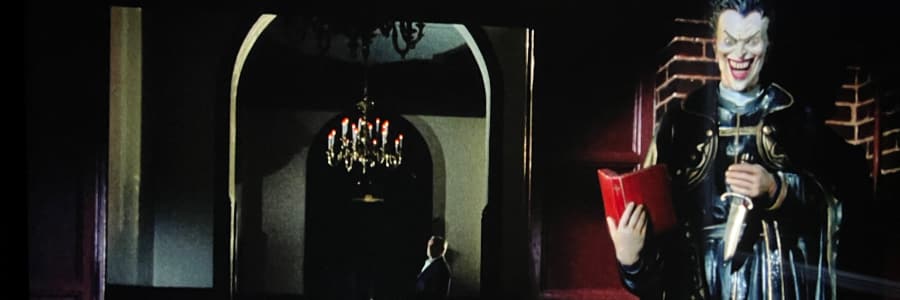
The Exorcist III (1990)
Director: William Peter Blatty
It took me a long time to track a copy of this down. Fifteen years after Father Damien Karras’s exorcism of Regan McNeil, a serial killer sets out on a series of brutal murders that is reminiscent of the long-dead Gemini Killer. Each death is a meticulous obscenity that is wisely more spoken of than shown. Lieutenant Bill Kinderman (the ever wonderful George C. Scott) is a seasoned but good humoured detective trying to connect the dots.
Kinderman has a tender relationship with Father Dyer, played by Ed Flanders, because they both knew the dead Father Karras. I’d heard Mark Kermode talk about George C Scott’s improvised story about carp that makes Ed Flanders giggle, so it was a joy to see it in context. The two men bond over cinema and banter like an old married couple. This gives the midpoint plot development an extra emotional kick.
The whole film is more of an existential downer than I expected. It’s about a demon bringing hell to earth after all. It’s flawed but also filled with wonders, and it must have been an influence on David Fincher’s Seven. Brad Dourif has to say some awful dialogue but gives such a great performance you almost buy it (souls drifting after death so that demons can slip them into other people’s bodies?). The final act is a bit of a mess, but portrayals of hell are tricky, especially with 1990 special effects. The now-famous hospital jump scare is truly one for the ages.
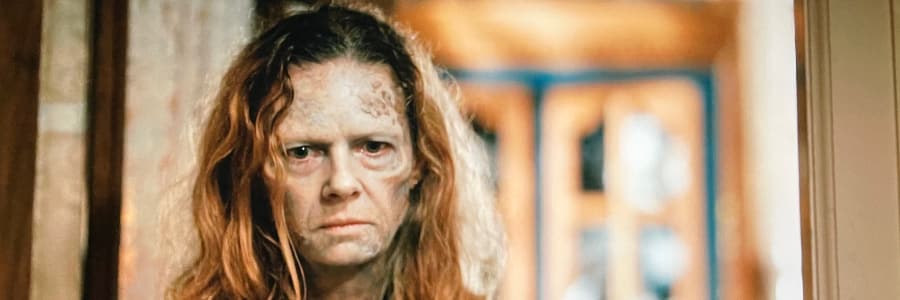
Director: George Romero
I’ll say up front that this was not for me. On a remote island, a long-running feud between the O’Flynns and Muldoons becomes violent over whether the walking dead should be culled or chained up in case a cure is found. Patriarch Patrick O’Flynn is exiled to the mainland where he holes up in a harbour and uses the internet to lure people to rob them. Four mercenary soldiers are tempted by O’Flynn’s message (an island where the zombie outbreak is under control!), and seeing an opportunity to usurp the Muldoons, O’Flynn seizes it.
This is a dud, plain and simple. The tone is all wrong, a zombie western with off-kilter comedy (a zombie riding a horse around the island ffs) mixed with gunfights and attempts to get the zombies to eat horses instead of people (?!). Left to their own devices, these zombies do unthinkingly whatever they naturally did while alive. There’s a cool set piece at a harbour where the soldiers have to get across the water to a ferry with zombies reaching up from the bottom. However, there’s no escaping the bad dialogue and clichéd family drama.
Looking for the positives, Romero’s social theme to chew on is unthinking feuds, and the zombie-like fighting that goes on between tribes. It also touches on religion, misogyny and entitlement, but it’s too silly to make much of a mark.
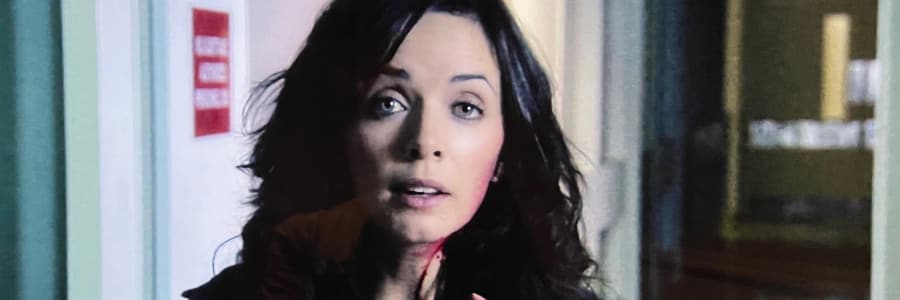
Diary of the Dead (2007)
Director: George Romero
The final few George Romero zombie films went under my radar. Even though this had mixed reviews, I didn’t believe Romero could make a complete dud. This one starts with film students making a horror movie in the woods who hear on the radio reports of the dead coming back to life. Director and cameraman Jason decides he will film the zombie apocalypse in as much detail as he can, putting pressure on relationships within the group in his desire to meticulously record everything that happens.
The found footage style, with the conceit of it being edited later, works well, and the zombies are slow, bordering on comical, until they get hold of someone. In one fun twist, an alcoholic old thespian turns out to be a highly skilled archer, but the other characters are a pretty standard bunch.
There’s lots of commentary on what it means to film something, how screens are a barrier to reality, and the toxic pull of hits and likes when Jason’s film goes viral (as viral as something could go in 2007). Romero made this before the iPhone was released. Now we all record and share online without a thought. And I’d forgotten that Romero’s zombies are not infected — anyone who dies with their brain intact comes back. That’s dark. This isn’t a plague, it’s hell on earth.
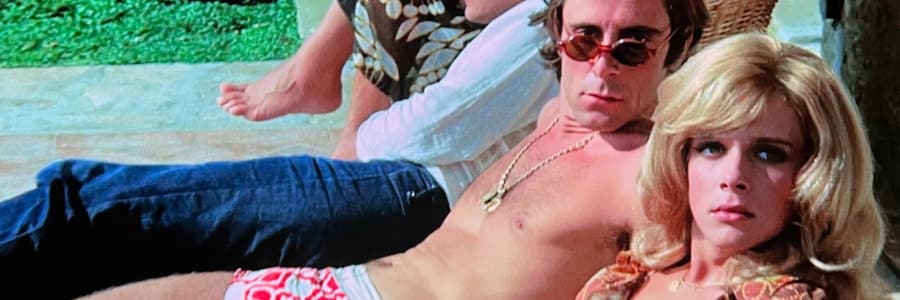
Director: Mario Caiano
I’m always surfing the edges of horror in October. I have to pace myself and mix things up to stay engaged. Giallo films bring thriller and mystery elements alongside gruesome murders, but Eye of the Labyrinth saves its horror to the final few minutes. Until then, it’s a whodunnit, or a didanybodydoit, or a whydidsomonemaybedoit.
Julie is looking for her missing psychiatrist (hard relate) and travels to a remote Greek island to search for him. Once there she finds herself at a villa on a clifftop with a commune of artists all acting suspiciously. The location has Glass Onion vibes, and the people are similarly kooky, but these residents are painters, actors and composers, all working under the patronage of Gerta, the terse older woman who runs the place.
Julie doesn’t make much progress until she begins to have flashbacks to a painting — an eye at the centre of a labyrinth. The twists and turns kept me hooked, and I have a soft spot for these seventies euro mysteries, especially when the people and locations are attractive. The horror at the end is good fun and Julie gets to have her revengeful moment in the sun.